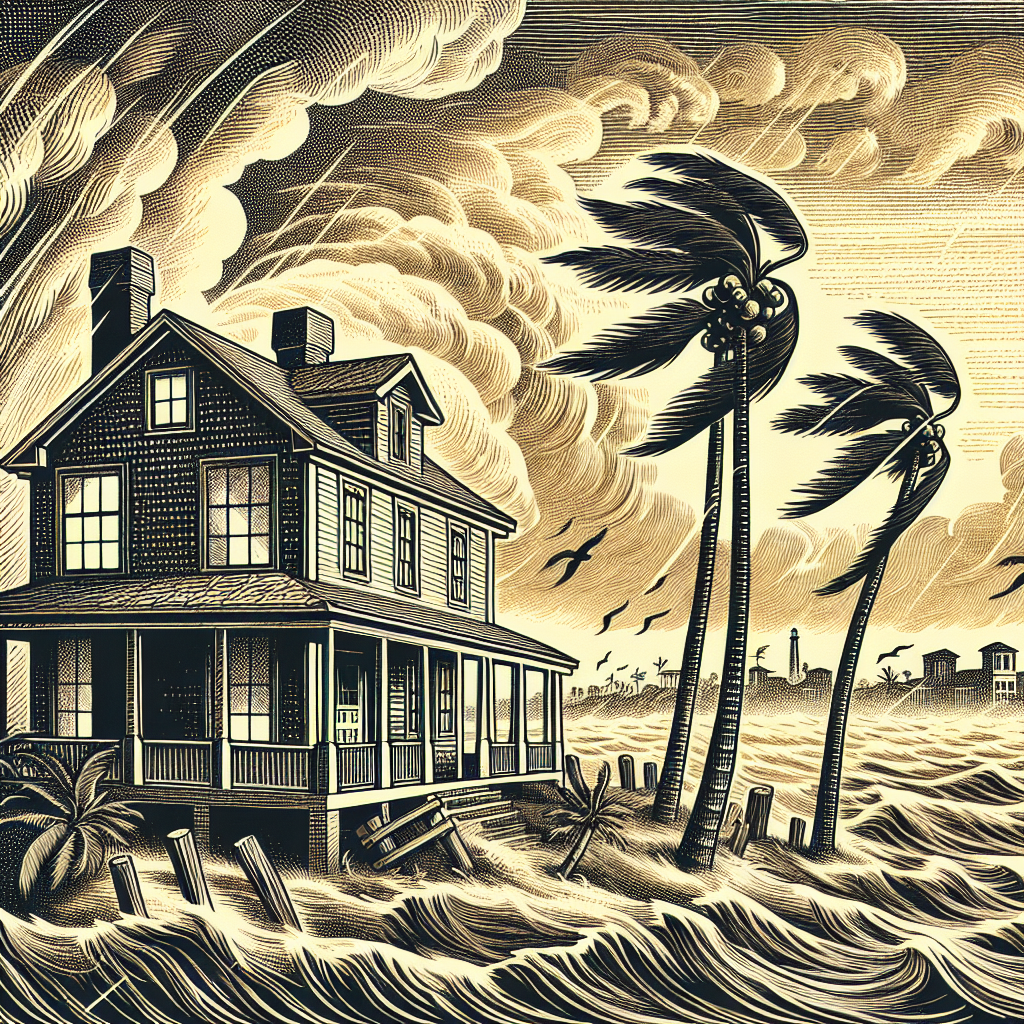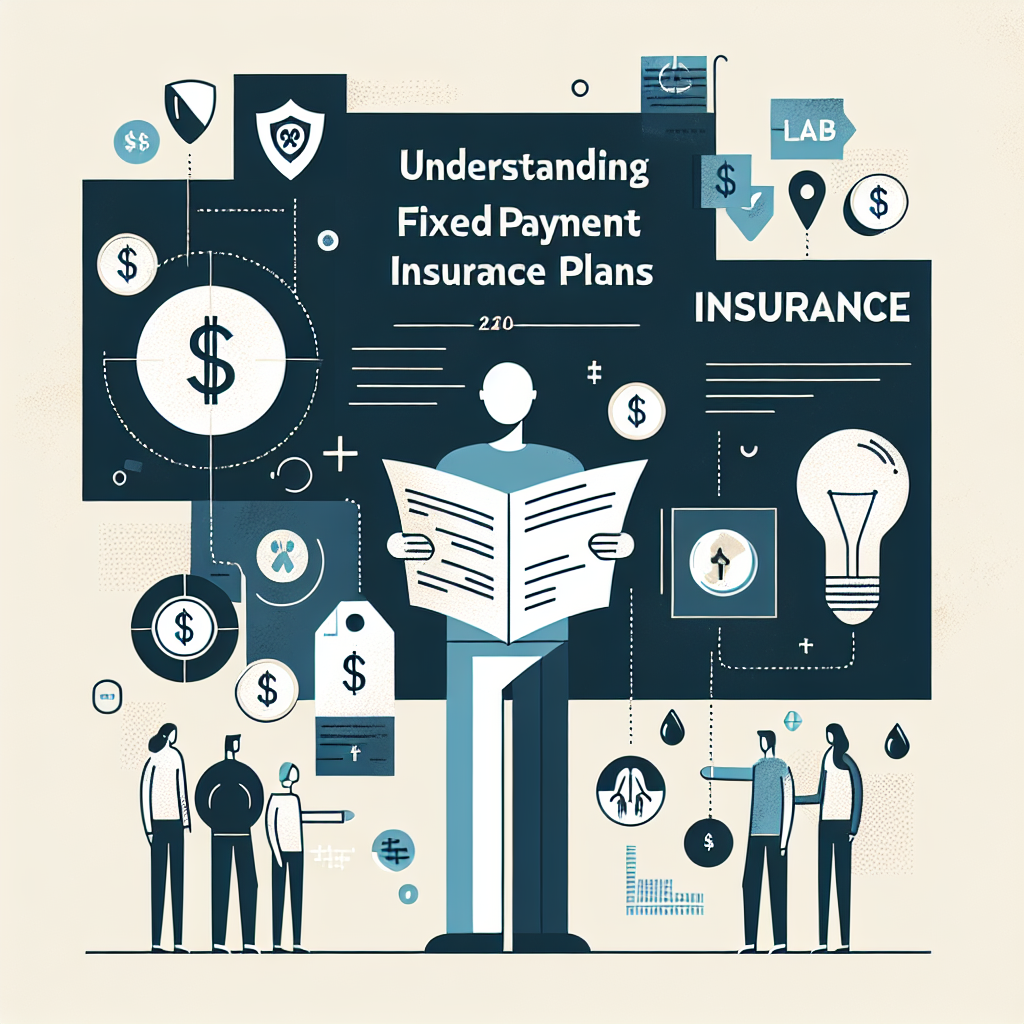Filed under Home Insurance on
Florida Home Insurance Hurricane Coverage Guide 2025

Welcome to the Florida Home Insurance Hurricane Coverage Guide 2025—your practical roadmap to protecting your home, savings, and peace of mind in the most hurricane-exposed state in the U.S. Whether you’re renewing a policy, shopping for better terms, or trying to understand what all those deductibles and endorsements mean, this guide organizes the essentials in one place so you can make confident, cost-effective decisions.
Florida Home Insurance Hurricane Coverage Guide 2025 at a glance
- Hurricane coverage isn’t a separate policy—it’s built into most Florida homeowners insurance, activated by a specific “hurricane event” definition.
- Your hurricane deductible is percentage-based (commonly 2%, 5%, or 10% of your dwelling limit) and applies once per calendar year.
- Flood and storm surge are excluded from standard homeowners insurance. Consider NFIP or private flood coverage.
- Wind mitigation features (impact windows, roof reinforcements, secondary water barrier) can slash premiums. A wind mitigation inspection is often the best ROI move you can make.
- Market trends for 2025 show gradual stabilization after years of rate pressure, but reinsurance costs and litigation reforms still shape pricing and coverage options.
- Citizens policyholders face phased-in flood insurance requirements through 2027 and active “depopulation” into private carriers.
- Claims rules have tightened: you generally have 1 year to file a new property claim in Florida.
What actually counts as hurricane coverage in Florida
In this Florida Home Insurance Hurricane Coverage Guide 2025, “hurricane coverage” means your homeowners policy pays for wind-driven damage that occurs during a hurricane event as defined by state rules. Florida’s Office of Insurance Regulation (OIR) anchors this definition to official watches and warnings: when a hurricane watch or warning is issued for any part of Florida by the National Hurricane Center, and for up to 72 hours after the last watch or warning ends, the hurricane deductible may apply to covered wind damage.
Most Florida policies follow the HO-3 or similar form, covering your structure, attached features, and belongings for named perils, including windstorm during a hurricane. But the details matter: how much you’re paid, what’s excluded, and whether the insurer requires you to use their managed repair network can vary by company.
Core coverages in play during a hurricane
- Dwelling (Coverage A): Pays to repair or rebuild your home. Verify your policy uses Replacement Cost (RC) on the dwelling and that your limit reflects current rebuilding costs, not market value.
- Other Structures (Coverage B): Covers detached structures like fences, sheds, and pool cages—often around 10% of Coverage A by default. Pool enclosures and screens can be limited or excluded for wind; ask about endorsements.
- Personal Property (Coverage C): Covers belongings. Opt for Replacement Cost coverage for contents; otherwise, you might receive depreciated (ACV) payouts.
- Loss of Use (Coverage D): Pays for additional living expenses (ALE) if your home is uninhabitable due to covered damage—think temporary housing, meals, and storage.
Endorsements that often matter after a hurricane
- Ordinance or Law: Pays for code upgrades during repairs. Consider 25%–50% of Coverage A, especially in areas with stringent building codes.
- Screened Enclosure Endorsement: Adds or increases coverage for pool cages and screen rooms during wind events.
- Water Backup: Covers damage from backed-up drains or sump overflows, which may occur after heavy rainfall.
- Special Personal Property: Broadens the perils for your contents so accidental damage is more widely covered.
- Roof Surfaces Cosmetic Exclusion: Some policies exclude cosmetic damage to roofs from wind or hail. Know whether that’s in your contract.
What isn’t covered (and how to fill the gaps)
- Flood and Storm Surge: Not covered by homeowners insurance. You need NFIP or private flood insurance for rising water from outside.
- Water Seepage Over Time: Slow leaks, rot, or maintenance issues are excluded.
- Power Outage Spoilage: Limited or excluded unless endorsed; check sublimits for refrigerated goods.
- Exterior Features: Fences, docks, solar equipment, and pool cages can have sublimits or exclusions for wind unless endorsed.
- Mold: Usually subject to tight dollar sublimits. Prevention and prompt mitigation are key.
Tip: If you live near the coast or in a surge-prone area, carry both a strong homeowners policy and a well-calibrated flood policy. The two work together: wind damage is a homeowners claim; surge and overland flooding is a flood claim.
Hurricane deductibles explained (with examples)
As you compare policies using any Florida Home Insurance Hurricane Coverage Guide 2025, focus closely on the hurricane deductible. It’s typically 2%, 5%, or 10% of Coverage A and applies only when the loss occurs during the official hurricane event window. Florida law caps you at one hurricane deductible per calendar year—once you hit it, subsequent hurricane losses in the same year usually default to your lower “all other perils” deductible.
How the math works
- Assume Coverage A is $400,000 and your hurricane deductible is 2%. Your deductible is $8,000. If a covered wind loss during a hurricane causes $50,000 in damage, the insurer pays $42,000 after the deductible.
- With a 5% deductible on the same home, your out-of-pocket is $20,000. The insurer pays $30,000 on a $50,000 covered loss.
- If a later hurricane in the same calendar year causes additional covered damage, you won’t pay that hurricane deductible again; subsequent losses typically face your standard deductible (for example, $2,500).
Choosing a higher hurricane deductible can lower premiums but increases out-of-pocket risk. Many households pair a 2% or 5% hurricane deductible with an emergency savings fund earmarked specifically for that exposure.
When does the hurricane deductible trigger?
- When a hurricane watch or warning is issued by the National Hurricane Center for any part of Florida.
- While the watch/warning is in effect, and for 72 hours after the last watch/warning ends.
- Damage outside that window typically uses your non-hurricane deductible.
Florida’s 2025 market snapshot: rates, reinsurance, and rules
The Florida Home Insurance Hurricane Coverage Guide 2025 would be incomplete without context on the market that sets your prices and coverage terms. After years of heavy losses and insurer exits, recent litigation reforms and new capital have helped stabilize conditions. Carriers in 2024 reported moderating reinsurance costs compared to peak years, though rates remain elevated. Several new or returning insurers have begun writing policies, and some existing carriers have filed for smaller increases or targeted decreases based on improved loss trends and mitigation uptake.
Citizens Property Insurance Corporation, the state-backed insurer, still covers over a million Floridians but continues “depopulation” efforts—transferring policies back to private insurers when competitive offers exist. Keep an eye on these evolving requirements:
- Flood Insurance Requirement for Citizens: Phased-in for personal residential policies—Coverage A of $600,000+ by 1/1/2024; $500,000 by 1/1/2025; $400,000 by 1/1/2026; all policies by 1/1/2027 (with certain zone-based rules already in effect).
- Roof Age Rules: Florida law generally prevents nonrenewals solely for roofs under 15 years old and encourages repair options where feasible, per 2022 reforms.
- Assignment of Benefits (AOB) and Attorney Fees: Recent reforms curtailed AOB for property claims and ended one-way attorney fee statutes for most property disputes, aimed at reducing litigation costs.
Storm frequency is influenced by sea-surface temperatures and global patterns such as El Niño/La Niña. While exact seasonal outcomes vary, Florida homeowners benefit from acting as if a landfall is possible every year: harden the home, right-size coverage, and know your claims plan.
Wind mitigation: the smartest way to cut costs and strengthen your home
Florida incentivizes hardening your home. A wind mitigation inspection documents features that can earn premium credits, often totaling hundreds to thousands of dollars per year, especially in South Florida.
Features that typically earn credits
- Roof Deck Attachment: Ring-shank nails or enhanced nailing patterns.
- Roof-to-Wall Connections: Clips, straps, or double wraps outperform toenails.
- Roof Covering: Newer roofs installed under recent Florida Building Code editions.
- Secondary Water Barrier: Self-adhering membranes beneath roof coverings.
- Opening Protection: Impact-rated windows, doors, and shutters for every opening.
- Roof Shape: Hip roofs are more wind-resilient than gable roofs.
Independent studies and insurer filings often show double-digit percentage savings for homes that document multiple mitigation features. Consider IBHS FORTIFIED upgrades when reroofing; they can improve resilience and may expand your discount eligibility.
How much coverage do you really need?
Replacement costs have risen with labor and materials inflation. Don’t let your Coverage A lag behind reality. Your insurer’s replacement cost estimator is a starting point, but confirm specifics: square footage, roof type, elevation, finishes, and special features. Underinsuring the dwelling is one of the costliest mistakes after a major storm.
Key coverage decisions to review annually
- Dwelling (Coverage A): Ensure it reflects current rebuild costs in your ZIP code.
- Other Structures (Coverage B): Increase beyond the default 10% if you have extensive fencing, a pergola, or a large pool enclosure.
- Personal Property (Coverage C): Opt for Replacement Cost. Schedule high-value items (jewelry, art) to bypass sublimits and deductibles.
- Loss of Use (Coverage D): In high-cost rental markets, consider raising this limit; hotels and rentals spike in price after landfall.
- Ordinance or Law: Consider 25%–50% to cover code-required upgrades, especially in older homes or stricter municipalities.
- Water Backup: Add or increase limits if you rely on sump systems or have low-lying plumbing lines.
Flood and storm surge: the other half of hurricane risk
This Florida Home Insurance Hurricane Coverage Guide 2025 also clarifies that homeowners insurance excludes flood, including storm surge and rising groundwater. Floridians in coastal and inland floodplains should strongly consider:
- NFIP Flood Insurance: Standardized coverage up to $250,000 for building and $100,000 for contents for most single-family homes. Contents are typically ACV unless endorsed; basements have limited coverage.
- Private Flood Insurance: Often higher limits and optional Replacement Cost for contents, sometimes with competitive pricing.
- Waiting Periods: NFIP has a typical 30-day waiting period; private flood may be shorter. Buy before hurricane season is in full swing.
Risk isn’t confined to FEMA flood zones. Rainfall-induced flooding can hit neighborhoods far from the coast. If you’d be financially strained replacing floors, drywall, and appliances out of pocket, flood coverage is worth a quote.
Claims playbook: what to do before and after a storm
One goal of the Florida Home Insurance Hurricane Coverage Guide 2025 is to help you sidestep delays and maximize legitimate benefits if you ever need to file a claim. Modern claims processes reward documentation, quick mitigation, and clear communication.
Before hurricane season
- Inventory and Photos: Walk through each room with your phone. Open drawers and closets. Save videos to the cloud.
- Proof of Value: Keep receipts, serial numbers, and appraisals for big-ticket items.
- Policy Snapshot: Save your declarations page, endorsements, and claim phone numbers offline.
- Mitigation Checklist: Clear gutters, trim trees, secure loose items, and verify your roof condition and attachments.
- Contractor Vetting: Pre-identify licensed, insured contractors and roofers; store contact info.
Right after a storm
- Safety First: Avoid downed lines and compromised structures. Shut off utilities if needed.
- Document Everything: Take photos and videos of all damage before making temporary repairs.
- Mitigate Further Damage: Tarp roofs, board windows, and dry wet areas. Save receipts for reimbursement.
- Report Promptly: Florida generally requires notice of a new property claim within 1 year of the loss. Don’t wait if you see damage.
- Keep a Claim Diary: Track calls, adjuster visits, estimates, and expenses.
- Beware of High-Pressure Sales: Avoid signing broad assignments of benefits. Use your insurer’s preferred vendor network if required, or follow policy rules when selecting your own.
Negotiating the settlement
- Know Your Deductible: Confirm whether the hurricane or all-other-perils deductible applies.
- Ask About Code Upgrades: If ordinance or law coverage applies, document required changes.
- Reinspection: If the scope seems incomplete, request another inspection and submit additional evidence.
- Disputes: Consider appraisal clauses, the state’s mediation program, or an experienced public adjuster or attorney for complex cases.
Cost-saving strategies without weakening protection
- Bundle Smartly: Multi-policy discounts (home + auto or umbrella) can meaningfully offset premiums.
- Adjust Deductibles Strategically: Balance premium savings with your emergency fund level.
- Wind Mitigation Upgrades: A wind mitigation inspection, reroof to current code, and impact openings often deliver the best long-term savings.
- Payment and Credit: Pay-in-full or set up auto pay for small discounts; keep credit in good health to qualify for better rates.
- Review Annually: Update coverage after renovations, solar installations, or major purchases.
- My Safe Florida Home: Watch for funding windows. Matching grants have helped many households strengthen roofs and openings while unlocking insurance credits.
Common hurricane scenarios (and how claims usually flow)
1) Wind damage, no flooding
A Category 2 storm tears shingles and damages your soffits. Coverage A responds after your hurricane deductible. If personal property is damaged by wind-driven rain entering through a wind-created opening (like a torn-off roof section), Coverage C may apply at Replacement Cost if you elected it. Loss of Use pays for temporary housing if your home is uninhabitable due to covered damage.
2) Surge flooding and wind together
Waves push seawater into your first floor and winds shatter windows. You’ll likely have two claims: flood for the surge damage and homeowners for direct wind damage. Adjusters coordinate, but each policy pays only for its piece. Your out-of-pocket includes both deductibles.
3) Tree falls from a neighbor’s yard
If wind knocks your neighbor’s healthy tree onto your roof, your policy handles the damage, subject to your deductible. Your insurer may pursue reimbursement later, but your claim should proceed regardless.
4) Extended power outage
Food spoilage coverage varies and is often modest unless you’ve added an endorsement. Document losses and save receipts for ice, generators, and temporary accommodations if ALE applies due to a covered peril.
How to read your declarations page like a pro
- Coverage Limits: A, B, C, D—verify amounts and whether they match your current lifestyle and rebuild costs.
- Deductibles: Note the hurricane deductible separately from the all-other-perils deductible.
- Endorsements: Look for ordinance or law, water backup, screen enclosure, and personal property replacement cost.
- Loss Settlement: Confirm replacement cost for dwelling and contents (if selected) and check any roof settlement limitations.
- Special Sublimits: Jewelry, firearms, cash, business property—schedule if needed.
What experts and data say about resilience
Florida’s building codes—among the toughest in the country—significantly reduce wind losses when properly implemented. Organizations such as the Insurance Institute for Business & Home Safety (IBHS) and catastrophe modelers routinely find that roof improvements, impact-rated openings, and continuous load paths materially reduce claims severity. NOAA and state emergency managers emphasize that early preparation—both physical mitigation and insurance planning—consistently shortens recovery times.
FAQ: Quick answers to common questions
Is hurricane coverage optional in Florida?
No. Windstorm, including hurricane, is typically embedded in Florida homeowners insurance, but policy forms and deductibles vary by carrier and county.
Will my premium drop if I choose a higher hurricane deductible?
Usually yes, though savings vary. Compare 2% vs. 5% quotes and weigh the difference against your emergency reserves and risk tolerance.
Does Citizens require flood insurance?
Yes, in phases through 2027 (with earlier requirements based on flood zones and higher Coverage A values). Check your renewal notices and calendar deadlines.
Can I insure my pool cage for wind?
Often, but you may need a specific endorsement and limits can be modest. Review your policy and request a quote to increase protection if allowed.
How long do I have to file a claim in Florida?
Generally 1 year from the date of loss for new property claims; reopened or supplemental claims have additional windows. Don’t delay—report promptly.
Do I need a wind mitigation inspection every year?
No, but update it when you upgrade your roof or openings. Provide documentation to your insurer to capture new credits.
Pre-season checklist for 2025
- Update your policy limits and endorsements based on current rebuild costs and possessions.
- Get or refresh a wind mitigation inspection after any structural upgrades.
- Price flood insurance now—account for waiting periods.
- Build a storm kit: water, food, medicines, battery backups, and copies of key documents.
- Plan evacuation routes and confirm where you’ll go if ALE is needed.
- Pre-vet contractors and store their info offline.
Putting it all together
Insurance is the financial side of hurricane readiness; mitigation is the physical side. Both matter. Review your hurricane deductible, confirm replacement cost on your dwelling and contents, add ordinance or law protection, and plug gaps like flood and water backup. Then harden your home with roof and opening upgrades to earn meaningful premium credits and reduce loss severity.
If you found this helpful, share it with a neighbor or use it as a conversation starter with your agent. The Florida Home Insurance Hurricane Coverage Guide 2025 is designed to help you buy only what you need, avoid costly surprises, and recover faster when the next storm comes ashore.
Note: This guide is for general education. Policy forms vary by carrier; confirm terms, limits, and legal updates with your licensed insurance professional.





